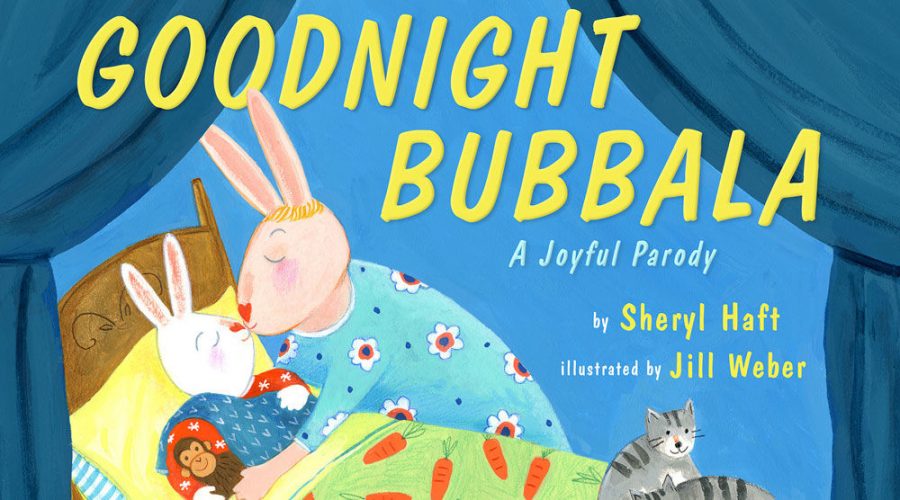‘Goodnight Bubbala’ and other Hanukkah-themed children’s books for the holiday season
Published December 19, 2019
BOSTON — As a child, Sheryl Haft was captivated by the sounds of her grandparents speaking Yiddish.
Sing-songy terms of endearment like “bubbala” and “mamleh shayne” sparked joy when her grandmother used them. Grittier words like “shmendrick” and “kvetch” tickled her funny bone.
Now Haft has captured that passion in a new children’s book that puts a delightful Yiddish spin on “Goodnight Moon,” the beloved bedtime classic by Margaret Wise Brown.
ADVERTISEMENT
“Goodnight Bubbala: A Joyful Parody” is set during Hanukkah. With bright and lively illustrations by Jill Weber, the lovingly zany story glows with the warmth of family holiday celebrations. The book includes a glossary of Yiddish words and a latkes recipe from master Jewish chef Ina Garten, an early fan of the manuscript.
“Goodnight Bubbala” (Penguin Random House, for ages 2 to 5) is among a handful of new children’s Hanukkah books out this year. Others include a Sesame Street board book for toddlers, two other picture books and a couple of chapter books for older readers.
Hanukkah starts this year on the evening of Dec. 22.
Like the original “Goodnight Moon,” Haft’s reimagined story opens with a sleepy bunny in pajamas preparing for bed. Instead of the great green room, there’s a small blue one, and this baby bubbala has a little worn blanket and stuffed gorilla.
But once that first page is turned, the quiet hush of the original is upstaged by the arrival of the whole raucous family who have come to celebrate Hanukkah. There’s music and dancing, dreidels, bagels, a pot of kneidels — and of course, latkes.
ADVERTISEMENT
The simple verse is brimming with Yiddish words like “plotz,” “tchotchkes,” “kvetch” and “verklempt.” Page after page is filled with colorful illustrations, with nods to the original art by Clement Hurd.
As the festivities wind down, it’s time to say goodnight. A tired “zaydie” (grandfather) nods off in a chair. When the family heads out under the wintry stars, the bunny falls asleep as the glow of the night sky shines through the window.
“I just loved the sound of the Yiddish language,” Haft said. “It always made me laugh.”
The author of “Baby Boo, I Love You” and the upcoming “Amazing Mazie McGear, Kid Engineer,” Haft wanted to share that sparkle in a book that reached a broad audience of young children.
Re-reading “Goodnight Moon” struck a chord for her, and she wondered what the story would look like if it were her family. She envisioned a mashup of Brown’s book with “Fiddler on the Roof” and “My Big Fat Greek Wedding.”
“Oh my gosh, no one is ever quiet,” Haft said. “It’s always a big joyful noisy gathering.”
For Weber, an award-winning illustrator whose many books include “The Story of Hanukkah,” by David A. Adler, the boisterous family scenes in Haft’s manuscript conjured images of long ago childhood visits with her grandparents.
“When we were there, from the first thing in the morning, in came the great-aunts and the food,” Weber said by phone from her home in New Hampshire. “It was this trail of people.”
Weber said she is honored to have a part in a book that presents Jewish culture to a broad swath of Americans during a time of divisiveness.
“It’s important to take this culture … and be proud and to encourage other immigrants to do the same,” she said.
At book events across the country Haft, who splits her time between New York and Jackson Hole, Wyo., has been surprised by the warm reception from older generations of Yiddish speakers who are eager to share the book with their grandchildren. One woman bought copies for her senior reading group.
“I am enjoying people sharing their favorite Yiddish words and phrases, as well as the excitement families are having around teaching these words to their children,” she said in an email.
Haft hopes the book succeeds in bringing Yiddish to a diverse audience and inspiring children of all backgrounds to “be a mensch.”
















